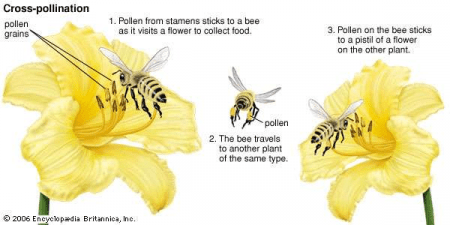About pollination and pollinators
- Pollination is the process by which plants reproduce and create seeds. Animals, called pollinators, are necessary for the movement of pollen from one plant to another.
- Insect pollinators include bees, wasps, beetles, flies, butterflies, and moths.
- Habitat loss and fragmentation (the process of breaking up large pieces of land into smaller more isolated patches), and the use of broad-spectrum pesticides are two of the main threats to insect pollinators.


